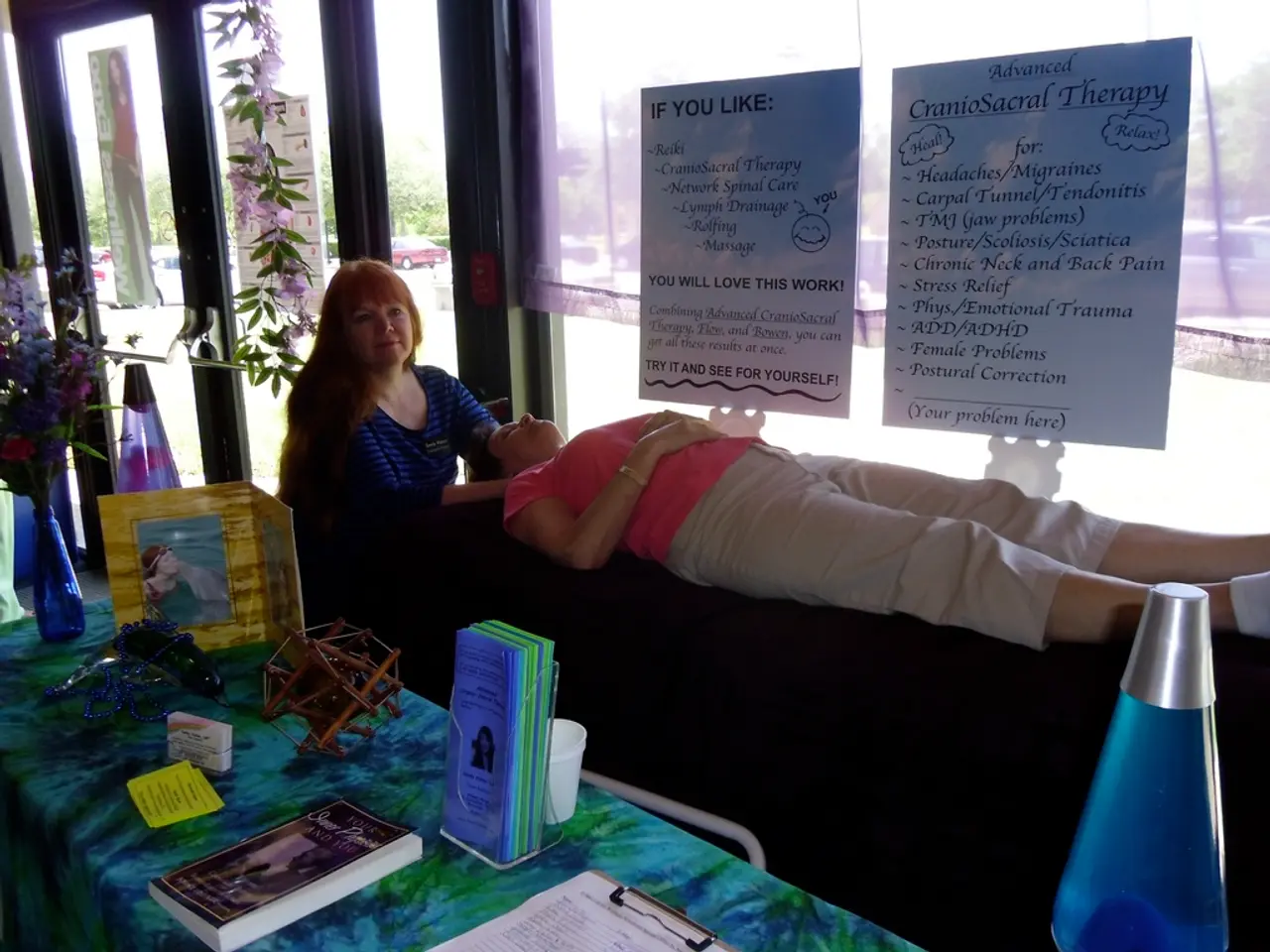Optimal Pain Relief for Stroke Victims: Essential Facts to Understand
Post-stroke pain (PAS) can be a challenging condition for doctors to treat due to safety concerns with pain medications post-stroke. However, an integrated approach combining appropriate medications, intensive physical and occupational rehabilitation, and complementary therapies such as acupuncture and TENS offers the most effective pain management for stroke patients.
Medications
Medications may involve analgesics to decrease pain, muscle relaxants to reduce spasticity, and other drugs to manage complications like seizures or brain pressure. For neuropathic pain (nerve pain after stroke), specific nerve-blocking medications may be used.
Antispasmodics like baclofen, tizanidine, and diazepam may be used to manage spasticity post-stroke, but benzodiazepines like diazepam are not recommended due to rapid tolerance build-up and potential negative effects on motor function. Anticonvulsants like gabapentin and pregabalin may help with certain types of post-stroke pain, such as Central Post-Stroke Pain (CPS), but their effectiveness is not well-established.
Some medications suggested for PAS depend on the cause of the pain and a person's individual circumstances. For instance, corticosteroids may be recommended for hemiplegic shoulder pain due to their ability to reduce inflammation. However, corticosteroid injections can cause pain, bruising, dimpled or paler skin around the injection site, increased appetite, mood changes, difficulty sleeping, and potential dependency.
Over-the-counter (OTC) pain medications like acetaminophen (Tylenol) can be taken for tension headaches in people who have had a stroke. Doctors may use antidepressants like tricyclic antidepressants, selective serotonin reuptake inhibitors (SSRIs), and serotonin-norepinephrine reuptake inhibitors (SNRIs) to manage PAS pain. Amitriptyline, duloxetine, and fluvoxamine are antidepressants that may help relieve post-stroke pain, but they can cause side effects such as dry mouth, constipation, urinary retention, low blood pressure upon standing, fatigue, headaches, and liver toxicity.
Physical Therapy and Rehabilitation
Physical therapy is crucial for improving movement, strength, and reducing pain through targeted exercises and functional retraining taught by physical therapists. Occupational therapy also helps regain skills and manage pain through adaptive techniques.
Complementary Treatments
Complementary treatments like acupuncture have shown benefits in alleviating post-stroke pain, spasticity, muscle weakness, and improving balance and swallowing. Electroacupuncture combined with therapy may effectively reduce muscle stiffness and improve strength. Other pain management approaches include transcutaneous electrical nerve stimulation (TENS), bioelectric therapies, and, in some chronic or neuropathic cases, nerve injections or non-invasive brain stimulation like repetitive transcranial magnetic stimulation (rTMS).
In summary, an individualized treatment plan supervised by healthcare professionals offers the most effective pain management for stroke patients. This plan should include appropriate medications, intensive physical and occupational rehabilitation, and complementary therapies such as acupuncture and TENS to ensure safety and maximize recovery outcomes.
- The use of medications for post-stroke pain (PAS) can involve a variety of drugs, including analgesics, muscle relaxants, and drugs to manage complications like seizures or brain pressure.
- Some medications may be specific for neuropathic pain, like nerve-blocking medications. For instance, antispasmodics like baclofen, tizanidine, and diazepam may be used to manage spasticity, while corticosteroids may be recommended for hemiplegic shoulder pain.
- Complementary therapies like acupuncture and Transcutaneous Electrical Nerve Stimulation (TENS) can offer benefits in alleviating PAS pain, spasticity, muscle weakness, and improving balance and swallowing.
- For overall health and wellness, including mental health, it's crucial to consider a holistic approach combining appropriate medications, intensive physical and occupational rehabilitation, and complementary therapies in managing PAS pain and ensuring optimal recovery outcomes.




